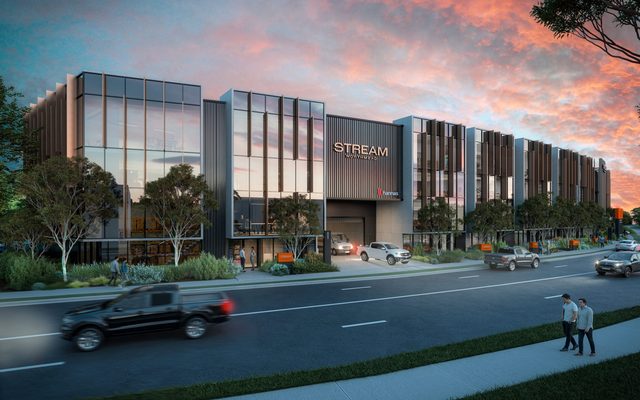This article is from the Australian Property Journal archive
BUYING an off-the-plan unit remains a risky proposition in every Australian capital city and most property buyers should be opting for a house instead, according to new research.
RiskWise Property Review’s Best and Worst Off-The-Plan Suburbs in Australia report said that off-the-plan houses present a better investment opportunity than new units, as a wave of new supply in almost all markets across the country looms.
The group’s founder Doron Peleg said there are currently more than 300,000 units in the pipeline that are planned for completion over the next two years.
“Some areas with significant supply of OTP properties have been flagged by the RBA as high risk investments and also major lenders have set lending restrictions and created ‘blacklists’ for some areas. Overall, the vast majority of current OTP properties are in high risk areas,” he said.
Peleg said both houses and units carry a degree of risk and usually deliver a lower return than an established property.
“In addition to the typical risks associated with an existing property, an OTP property is also exposed to a settlement risk and to a significant sudden addition of new dwellings, mainly investment properties, into the area,” he said.
The new research identified new houses in Kellyville (NSW), North Geelong (Victoria) and Manly West (Queensland) amongst the best OTP suburbs across the country, whilst prime areas in the Sydney’s North Shore, including North Sydney, represent the best locations for OTP unit investment.
The highest-risk locations included Waterloo, Melbourne, and Brisbane’s Fortitude Valley.
“In addition to the ‘usual suspects’ in inner-Melbourne and inner-Sydney, our list contains a large number of suburbs that were considered as a surprise, such as East Brunswick in Melbourne,” Peleg said.
Recent BIS Oxford Economics data showed the inner Melbourne returned the highest proportion of large losses – 10% or higher – which BIS residential property senior manager Angie Zigomanis said could be attributed to the inner city supply being the largest of the eastern seaboard capitals, with the supply pipeline continuing to deliver record number of dwellings.
According to BIS data, 54% of off-the-plan resales in Melbourne suffered a loss, of which 38% posted losses of between 5% and 20% and 10% of vendors saw in excess of 20% fall off the price.
Sydney market saw 96% of resales enjoy an increase in price over the period from 2011 to 2016. Brisbane’s negative or flat off-the-plan resales were at 26% and 53% respectively.
Data from Australia’s largest independent valuation firm, Herron Todd White, recently showed the average loss recorded in off-the-plan apartments resold over the past 18 months is around 10% to 12%, with some sales recording falls as much as 40% – and more for some poorer-designed projects.
HTW managing director Tony Kelly said the firm compared off-the-plan apartment sales that were settled and then quickly resold independent of the developer, with units that were returned to a developers’ inventory after the original buyer failed to settle, and sold again by the developer.
HTW’s data found that in 2014, the average off-the-plan apartment initially sold for $572,000 and resold for $504,000. In 2015, the resale price of the average $613,000 off-the-plan apartment was $551,000, whilst last year the average $649,200 off-the-plan apartment was subsequently resold at $587,000.
On a living area per sqm, in 2014 an apartment resold on a rate of $8,047 per sqm versus $9,112 per sqm; in 2015 that was $8,278 per sqm down from the initial $9,228 per sqm; last year down to $8,117 per sqm from $9,066 per sqm.
The losses are not isolated to the one-bedroom apartment market, with the two and three-bedroom units favoured by the growing owner occupier market also at risk.
Kelly said the issue is that some buyers still do not understand that the contract price is set by the developer, and not by the market.
RiskWise highlighted seven key factors to distinguish good locations from the bad for both the houses and units sectors in its new report.
Dwellings in a region with sustainable economic growth outperformed the national benchmark in 90% of cases, and an average five-year growth of 48%.
The proportion of new units in a region was a major driver for both houses and units, with a low proportion linked with strong capital growth.
Peleg said those suburbs outperformed the benchmark in 85% of cases and delivered five-year growth of 50.3%, whilst areas with a high proportion outperformed 63% of the time and 30% capital growth.
Riskwise’s research showed that OTP houses outperform units in the same area, and OTP units in middle-ring suburbs bettered those in the inner-ring, with 83% of suburbs in the middle-ring outperforming the benchmark and returning 47% capital growth for units. Units within five kilometres of the CBD met the benchmark just 53%of the time and showed capital growth of 22.3%.
OTP units in suburbs with a higher median price outperformed the benchmark 85% of the time, compared to 70% in those with a lower unit median price
Affordable OTP units typically performed better than their higher priced counterparts, and suburbs with lower renter ratios showed more capital growth.
Australian Property Journal




